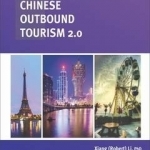Chinese Outbound Tourism 2.0
BookThis item doesn’t have any media yet
2015 | Business & Finance
Booming Mainland Chinese outbound travel is one of the most exciting phenomena in the world tourism industry's recent history. From 2000 to 2010, Chinese outbound travel increased at a compounded annual rate of 18.5 percent, and it is forecasted that by 2020 China will generate approximately 100 million outbound trips a year, making China the fourth largest source of outbound travel in the world. The new Chinese tourists are more confident, technologically savvy, value conscious, and ready to explore unfamiliar territory. For tourism marketers and researchers who are getting ready to or just celebrated their initial "west-meets-east" moments, the new Chinese tourists are showing up at their doors and presenting new challenges for marketing and service. In this book, leading authors from around the world share their most cutting-edge findings and thoughts on the Chinese outbound travel market. The book reflects on the paths of the Chinese outbound travel development, reports new trends and issues, and provides new insights and recommendations. For practitioners around the world (e.g., destination policymakers and marketers, travel and tourism service providers, owners, and managers), this book provides hands-on guidance on understanding tourists from Mainland China.
For tourism scholars, educators, and students, this book provides basic yet essential knowledge on the Chinese outbound travel market and tourist behavior and points out important future directions. Most tourism programs today have an international component in their curriculum, usually including a global tourism class. This book serves as an excellent supplemental reading for students in these classes.
Related Items:
| Published by | Apple Academic Press Inc. |
| Edition | Unknown |
| ISBN | 9781771881807 |
| Language | N/A |
Images And Data Courtesy Of: Apple Academic Press Inc..
This content (including text, images, videos and other media) is published and used in accordance
with Fair Use.
